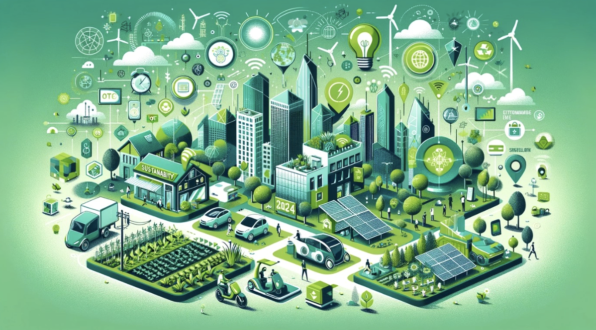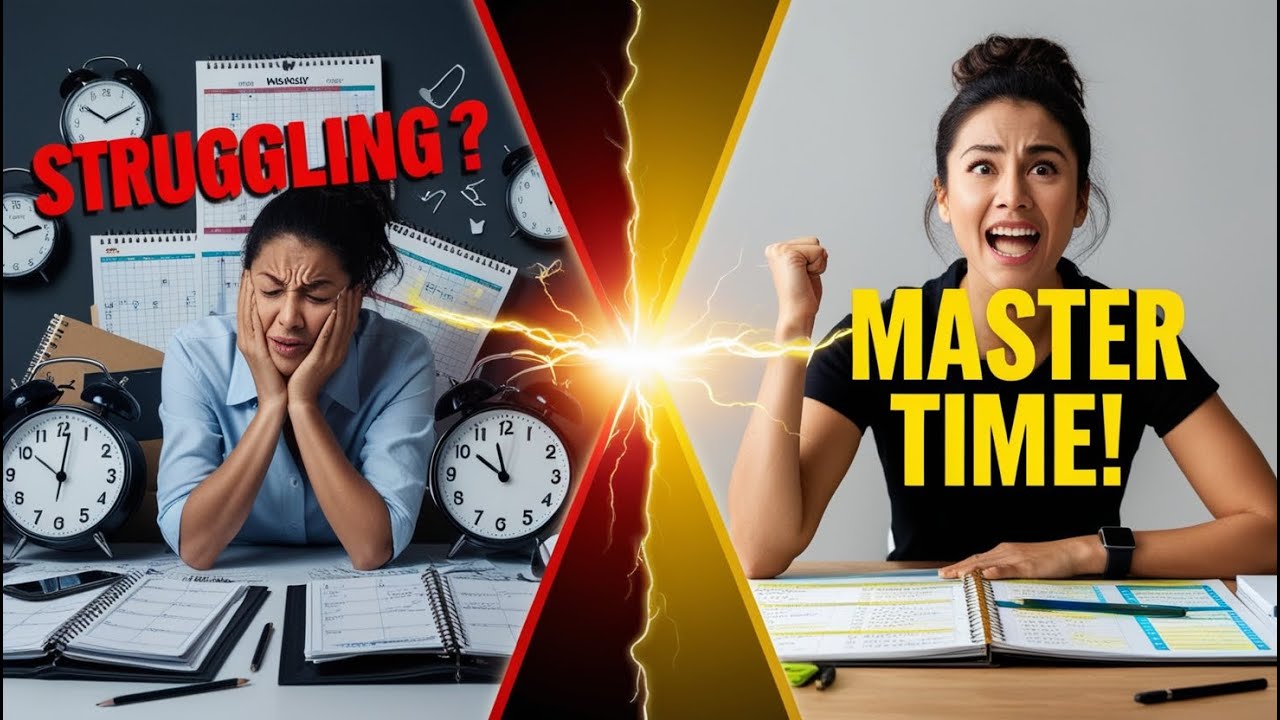Productivity
Renewable Energy Products You Need to Know About in 2024

Renewable Energy Products You Need to Know About in 2024
The world is at a pivotal moment in its history, where the choices we make today will significantly impact the future of our planet. With the growing concern over climate change, resource depletion, and environmental degradation, there is an urgent need to transition from traditional fossil fuels to more sustainable energy sources. Renewable energy products, which harness energy from natural, inexhaustible resources like sunlight, wind, and water, are at the forefront of this transition. This article explores how renewable energy products are paving the way for a sustainable future, discussing their benefits, challenges, and the comparative performance of various renewable energy technologies.

Yandex
- The Importance of Renewable Energy
Renewable energy is critical to addressing the environmental challenges facing our world today. Unlike fossil fuels, renewable energy sources produce little to no greenhouse gas emissions, making them a cleaner and more sustainable option for meeting the world’s energy needs. By reducing our dependence on fossil fuels, renewable energy helps mitigate climate change, improve air quality, and conserve natural resources. Furthermore, the development and deployment of renewable energy products have the potential to create jobs, spur economic growth, and increase energy security by diversifying the energy supply.
- Key Types of Renewable Energy Products
Renewable energy products come in various forms, each harnessing different natural resources. The most common types of renewable energy products include:
- Solar Energy Products
Solar energy products, such as photovoltaic (PV) panels, solar water heaters, and solar cookers, capture sunlight and convert it into electricity or heat. These products are widely used in residential, commercial, and industrial settings. The declining cost of solar panels and advancements in technology have made solar energy one of the fastest-growing renewable energy sectors.
- Wind Energy Products
Wind energy products, including wind turbines and wind farms, generate electricity by capturing the kinetic energy of the wind. Wind energy is highly efficient and can be deployed onshore and offshore. Wind turbines have become increasingly popular due to their ability to produce large amounts of electricity with minimal environmental impact.
- Hydropower Products
Hydropower products, such as dams and micro-hydro systems, use the energy of flowing or falling water to generate electricity. Hydropower is one of the oldest and most reliable forms of renewable energy, providing a steady and consistent power source. It is especially effective in regions with abundant water resources.
- Biomass Energy Products
Biomass energy products, including biomass boilers, biofuels, and anaerobic digesters, convert organic materials like wood, agricultural residues, and animal waste into energy. Biomass is a versatile renewable energy source that can be used for heating, electricity generation, and transportation fuels.
- Geothermal Energy Products
Geothermal energy products, such as geothermal heat pumps and power plants, harness the Earth’s internal heat to generate electricity and provide heating and cooling. Geothermal energy is a reliable and consistent energy source, particularly in regions with high geothermal activity.
- Benefits of Renewable Energy Products
Renewable energy products offer numerous environmental, economic, and social benefits, making them essential in achieving a sustainable future.
- Environmental Benefits
Renewable energy products significantly reduce greenhouse gas emissions, which are the primary drivers of climate change. By displacing fossil fuels, renewable energy helps to decrease air and water pollution, protecting ecosystems and biodiversity. Additionally, renewable energy products require less water for operation, which is crucial in water-scarce regions.
- Economic Benefits
The renewable energy sector has become a significant contributor to global economic growth. The increasing demand for renewable energy products has created millions of jobs worldwide, from manufacturing and installation to operation and maintenance. Moreover, renewable energy projects often stimulate local economies by providing new revenue streams and reducing energy costs.
- Energy Security
Renewable energy products contribute to energy security by diversifying the energy supply and reducing dependence on imported fossil fuels. This diversification reduces the vulnerability to energy price fluctuations and geopolitical tensions associated with oil and gas supplies.
- Social Benefits
The deployment of renewable energy products can enhance energy access in remote and underserved regions, improving the quality of life and promoting sustainable development. In addition, the decentralized nature of renewable energy systems can empower communities by giving them greater control over their energy resources.
- Challenges Facing Renewable Energy Products
While renewable energy products offer numerous benefits, several challenges must be addressed to fully realize their potential.
- Intermittency and Reliability
One of the main challenges of renewable energy is its intermittency. Solar and wind energy, in particular, depend on weather conditions, which can lead to fluctuations in energy production. Developing efficient energy storage solutions and grid management systems is crucial to overcoming this challenge.
- High Initial Costs
The upfront costs of renewable energy products can be higher than those of traditional energy systems. However, these costs are decreasing due to technological advancements and economies of scale. Additionally, the long-term savings from lower operating costs and energy bills often outweigh the initial investment.
- Land and Resource Use
Large-scale renewable energy projects, such as wind farms and solar power plants, require significant amounts of land and resources. This can lead to land-use conflicts and environmental concerns, particularly in ecologically sensitive areas. Careful planning and environmental impact assessments are essential to minimize these impacts.
- Infrastructure and Policy Support
The transition to renewable energy requires significant changes in infrastructure, such as upgrading the electrical grid to accommodate decentralized energy sources. Furthermore, supportive policies and regulations are needed to encourage the adoption of renewable energy products and remove barriers to their deployment.
- Comparative Analysis of Renewable Energy Technologies
To better understand the performance and suitability of different renewable energy products, it is helpful to compare them based on several key factors, such as efficiency, cost, environmental impact, and scalability. The table below provides a comparative analysis of solar, wind, hydropower, biomass, and geothermal energy technologies.
| Technology | Efficiency | Cost | Environmental Impact | Scalability | Reliability |
| Solar | 15-22% (PV panels) | Decreasing, varies by region | Low emissions, land use for large-scale plants | High (rooftop to utility-scale) | Intermittent (depends on sunlight) |
| Wind | 35-45% (onshore), 50%+ (offshore) | Competitive with fossil fuels | Low emissions, visual and noise impacts | High (onshore and offshore) | Intermittent (depends on wind) |
| Hydropower | 70-90% | Low (after initial investment) | Low emissions, ecosystem impact | High (large and small-scale) | High (steady output) |
| Biomass | 25-35% (electricity), 70-85% (heating) | Moderate, varies by feedstock | Low to moderate emissions, land use | Medium (local to regional) | High (steady output) |
| Geothermal | 10-20% (electricity), 300-500% (heat pumps) | High initial, low operating costs | Low emissions, land use | Medium (regional) | High (steady output) |
- Future Outlook and Innovations in Renewable Energy Products
The future of renewable energy products is promising, with continuous advancements in technology, policy support, and market expansion. Several key trends and innovations are expected to shape the renewable energy landscape in the coming years:
- Energy Storage Solutions
Advancements in energy storage technologies, such as batteries and pumped hydro storage, will play a crucial role in addressing the intermittency of renewable energy sources. Improved storage solutions will enable more consistent and reliable energy supply, making renewable energy more viable for a broader range of applications.
- Smart Grids and Digitalization
The integration of smart grid technologies and digitalization will enhance the efficiency and management of renewable energy systems. Smart grids can optimize energy distribution, reduce losses, and facilitate the integration of decentralized energy sources, such as rooftop solar panels and small-scale wind turbines.
- Offshore Wind and Floating Solar
The development of offshore wind farms and floating solar panels is expanding the potential of renewable energy products. Offshore wind farms can harness stronger and more consistent winds, while floating solar panels can be deployed on water bodies, reducing land use and increasing energy output.
- Green Hydrogen
Green hydrogen, produced using renewable energy, is emerging as a key solution for decarbonizing sectors that are difficult to electrify, such as heavy industry and transportation. The production and use of green hydrogen could significantly expand the role of renewable energy products in the global energy mix.
- Conclusion: Renewable Energy Products as Catalysts for a Sustainable Future
Renewable energy products are at the heart of the transition towards a more sustainable and resilient future. By harnessing the power of natural resources like sunlight, wind, water, biomass, and geothermal heat, these products offer a cleaner, more sustainable alternative to fossil fuels. While challenges remain, the continued development and deployment of renewable energy products will be essential in combating climate change, protecting the environment, and ensuring energy security for future generations. The future of energy lies in the widespread adoption and innovation of renewable energy products, which have the potential to transform our world for the better.
Analysis Table: Benefits vs. Challenges of Renewable Energy Products
| Aspect | Benefits | Challenges |
| Environmental | Low greenhouse gas emissions, reduced pollution, conservation of resources | Land use, resource extraction for materials, ecosystem impacts (e.g., hydropower) |
| Economic | Job creation, energy cost savings, economic growth, energy security | High initial costs, need for infrastructure investment, market volatility |
| Social | Improved energy access, community empowerment, health benefits (reduced air pollution) | Potential displacement (large projects), social acceptance (e.g., visual impact of wind turbines) |
| Technological | Innovation and advancements (e.g., energy storage, smart grids) | Intermittency, reliability, need for technological development and integration |
Comparative Table: Renewable Energy Products vs. Fossil Fuels
| Aspect | Renewable Energy Products | Fossil Fuels |
| Environmental Impact | Low emissions, renewable, sustainable | High emissions, non-renewable, environmental degradation |
| Cost | Decreasing, long-term savings, price stability | Initially lower, volatile, externalized environmental costs |
| Energy Security | Diverse sources, decentralized, less geopolitical risk | Concentrated in certain regions, subject to geopolitical tensions |
| Reliability | Intermittent (some types), reliant on natural conditions | High reliability, but subject to resource depletion |
| Scalability | High (with innovation), flexible, applicable at various scales | High, but limited by resource availability and environmental impact |
Conclusion
As we advance through 2024, the landscape of renewable energy is rapidly evolving, offering an array of innovative products that are transforming how we power our world. From cutting-edge solar panels with enhanced efficiency to state-of-the-art wind turbines and revolutionary energy storage solutions, these technologies are not only addressing the growing demand for clean energy but also making it more accessible and affordable than ever before.
Productivity
Spot Ethereum ETFs Set for SEC Approval by May 24, Say Experts
Productivity
Unlock Logical Thinking with Coding Assignment Help

Introduction
Every student wants to think clearly and solve problems fast. With coding assignment help, you can boost your logical thinking skills step by step. When you work on programming tasks, you learn to break big problems into small parts. You also spot patterns and plan your solution. In this guide, we will show how programming logic skills grow with expert support. You’ll see the benefits, tips to choose the right help, and tools that make learning easier. Ready to unlock your mind’s power? Let’s get started.
What Is Coding Assignment Help?
Coding assignment help means getting guidance on your programming tasks. It can come from:
- Online tutors: Experts who explain concepts in real time.
- Homework services: Professionals who review your code and suggest fixes.
- Study groups: Peers who work on tasks together.
- Video lessons: Step-by-step tutorials you can replay.
This help does not replace your work. Instead, it shows you how to think like a coder. You learn by doing, with feedback to guide you.
How Coding Improves Logical Thinking
Writing code is like solving a puzzle. You must:
- Define the problem clearly.
- Break it into smaller steps.
- Plan each step in order.
- Test and fix errors.
This process trains your brain to follow logic. You learn to spot mistakes early. You also build the habit of testing each idea. Over time, you think more clearly in every task, not just coding.
Key Benefits of Seeking Help
Getting coding assignment help offers many advantages:
- Faster Learning: Experts explain tricky topics in simple words.
- Better Grades: Clear guidance helps you submit correct solutions.
- Confidence Boost: Knowing your code works gives you pride.
- Error Reduction: You learn to spot and fix bugs faster.
- Long-Term Skills: You master problem-solving, not just a single language.
These benefits show why investing in help pays off in the long run.
Common Challenges and Solutions
Even with help, you may face hurdles:
- Overwhelm: Too many new concepts at once.
- Solution: Focus on one topic each session.
- Syntax Errors: Missing a bracket or typo.
- Solution: Use an editor with error highlights.
- Logic Flaws: Code runs but gives wrong results.
- Solution: Walk through your steps with a tutor.
- Time Management: Procrastinating on assignments.
- Solution: Set small, timed goals with breaks.
A good help service will guide you through these issues and keep you on track.
Choosing the Right Help Service
Not all services are the same. Look for:
- Experienced Tutors: Check their background and reviews.
- Clear Pricing: Avoid hidden fees or long-term contracts.
- Flexible Hours: Support when you need it, even evenings or weekends.
- Personal Feedback: Tutors who explain “why,” not just “what.”
- Resource Library: Extra exercises, code samples, and quizzes.
Read testimonials and ask for trial sessions. Pick a service that matches your style.
Tools and Resources to Boost Your Learning
Along with help, use tools that sharpen programming logic skills:
- Code Editors: Visual Studio Code or Atom with live error checks.
- Online Platforms: Codecademy, freeCodeCamp, or HackerRank.
- Debuggers: Step through code and watch variables change.
- Flowchart Software: Draw logic flows before coding.
- Flashcards: Drill key concepts like loops, conditions, and data types.
Pair these with your help sessions to learn faster and retain more.
Real-World Examples of Logical Thinking
Many careers need strong logic. For example:
- Game Development: You plan game loops and physics.
- Data Science: You filter, sort, and analyze data sets.
- Web Design: You build interactive pages with clear user paths.
- Robotics: You code robots to react correctly in real time.
In each field, you face complex problems. Coding practice and help sharpen the skills you’ll use on the job.
Long-Term Impact on Your Education
Logical thinking goes beyond coding. It helps you:
- Write Clear Essays: You structure arguments step by step.
- Solve Math Problems: You break proofs into small leaps.
- Plan Projects: You outline tasks in order and track progress.
- Make Smart Decisions: You weigh options and foresee outcomes.
By mastering logic now, you build a strong foundation for any subject.
Measuring Your Progress
Track your growth with these methods:
- Set Milestones: Finish a function, then a whole project.
- Code Reviews: Ask mentors to check your work monthly.
- Timed Challenges: Solve small tasks in 30 minutes.
- Portfolio Projects: Build apps or websites to show your skills.
- Self-Quizzes: Test your recall on key concepts weekly.
Regular checks keep you motivated and steer your learning path.
Balancing Help with Independent Work
While help is great, balance is key:
- Try First: Attempt problems alone before seeking help.
- Reflect: After guidance, redo the task on your own.
- Apply: Use new logic skills in small personal projects.
- Teach Others: Explaining concepts to peers deepens your understanding.
This balance ensures you master concepts rather than depend on tutors.
Conclusion
Coding assignment help is a powerful tool to unlock logical thinking. With expert guidance, you learn to break down problems, plan clear steps, and test solutions. You gain confidence and build programming logic skills that help in school and beyond. Remember to choose a service that fits your needs, use the right tools, and balance guided sessions with solo practice. Track your progress with milestones and real projects. By investing in coding help today, you set yourself up for smarter decisions, better grades, and a future filled with problem-solving success. Start your coding journey now, and watch your logical mind grow!
Productivity
Mastering Productivity With These Time-Management Tips

Introduction
Boosting productivity starts with smart time management techniques that help you work smarter, not harder. Whether you’re a student juggling assignments or a professional handling multiple projects, managing your time well makes a big difference. In this article, you’ll discover simple time management tips you can use today to get more done, reduce stress, and enjoy better work–life balance. Let’s explore practical strategies—from setting goals to using useful tools—that even a 10th grader can follow. Ready to take control of your schedule and supercharge your productivity? Let’s dive in!
Mastering Productivity With Top Time-Management Tips
1. Set Clear and Realistic Goals
Successful time management begins with clear goals. When you know exactly what you want to achieve, it’s easier to plan your day.
- Write down your goals: Jot them on paper or in a notes app.
- Be specific: Instead of “study math,” try “complete five algebra problems.”
- Set deadlines: Assign due dates for each goal to stay on track.
- Break big goals into steps: Divide large tasks into smaller, manageable parts.
By defining clear objectives, you avoid wasted time and focus on tasks that truly matter. This simple rule is the foundation of any effective productivity system.
2. Prioritize Tasks with the Eisenhower Matrix
Not all tasks are equally important. Use the Eisenhower Matrix to decide what to do first:
- Urgent & Important: Handle these tasks immediately.
- Important, Not Urgent: Schedule time for these tasks later.
- Urgent, Not Important: Delegate or do quickly and move on.
- Neither Urgent nor Important: Eliminate or postpone.
Applying this method keeps you from spending too much time on low-value activities. It also helps you focus on high-impact work that drives real progress.
3. Use Time-Blocking to Structure Your Day
Time-blocking is one of the most powerful time management tips. You divide your day into blocks dedicated to specific tasks.
- Create a daily schedule: Assign each block a clear purpose (e.g., emails, focused work, meetings).
- Limit block length: Keep each block between 30 and 90 minutes to avoid fatigue.
- Include breaks: Schedule short breaks between blocks to recharge.
- Stick to the plan: Treat blocks like appointments. Honor them as you would a doctor’s visit.
This technique prevents multitasking, keeps your mind on one task at a time, and dramatically boosts productivity.
4. Minimize Distractions
Distractions kill focus and waste precious minutes. Take steps to create a distraction-free environment:
- Turn off notifications: Silence social media and email alerts during work blocks.
- Use website blockers: Apps like Freedom or Cold Turkey stop you from visiting time-wasting sites.
- Set “do not disturb” boundaries: Let colleagues or family know your focused hours.
- Tidy your workspace: A clean desk helps you think clearly and reduces visual clutter.
By controlling your surroundings, you conserve mental energy and maintain steady progress on important tasks.
5. Apply the Pomodoro Technique
The Pomodoro Technique pairs well with time-blocking. It breaks work into short, intense bursts:
- Work for 25 minutes on one task.
- Take a 5-minute break—stretch, walk, or grab water.
- After four cycles, take a longer break (15–30 minutes).
These short sprints help maintain high focus and prevent burnout. Over time, you’ll notice you can work more efficiently and for longer stretches.
6. Leverage Productivity Tools
Modern apps and tools can streamline your workflow. Here are some suggestions:
- Task managers: Trello, Todoist, or Asana let you track tasks and deadlines.
- Calendar apps: Google Calendar or Outlook helps with time-blocking and reminders.
- Note-taking: Evernote or OneNote keeps ideas organized and searchable.
- Focus apps: Forest or Focus@Will combine timers with background sounds to boost concentration.
Test a few tools to find the ones that fit your style. The right software can automate routine tasks and free up brainpower for creative work.
7. Batch Similar Tasks
Grouping similar tasks reduces context switching, which costs time and focus.
- Email batching: Check and reply to emails three times a day instead of constantly.
- Content creation: Write all blog outlines at once, then draft, then edit.
- Errands: Run all physical errands in one trip rather than scattering them across days.
By batching, you stay “in the zone” longer and accomplish more in less total time.
8. Review and Adjust Regularly
No plan survives unchanged. Set aside time each week to review how you spent your time:
- Analyze your calendar: Which blocks went smoothly? Where did you slip?
- Assess goals: Did you meet your weekly objectives?
- Adjust blocks: Move or resize blocks in next week’s schedule based on what you learned.
- Reflect on wins and losses: Celebrate progress and identify obstacles to tackle.
Continuous review ensures you refine your approach and keep improving your time management techniques.
Conclusion
Mastering productivity hinges on using smart time management tips every day. Start by setting clear goals and prioritizing tasks with the Eisenhower Matrix. Structure your schedule through time-blocking and short Pomodoro sprints to keep focus high. Minimize distractions, batch similar tasks, and leverage productivity tools to work more efficiently. Finally, review your progress weekly and adjust your plan to stay on track. With these strategies, you’ll accomplish more in less time, reduce stress, and find room for what you love most. Commit to small changes now, and watch your productivity soar.
-
Business2 years ago
Cybersecurity Consulting Company SequelNet Provides Critical IT Support Services to Medical Billing Firm, Medical Optimum
-
Business2 years ago
Team Communication Software Transforms Operations at Finance Innovate
-
Business2 years ago
Project Management Tool Transforms Long Island Business
-
Business2 years ago
How Alleviate Poverty Utilized IPPBX’s All-in-One Solution to Transform Lives in New York City
-
health2 years ago
Breast Cancer: The Imperative Role of Mammograms in Screening and Early Detection
-
Sports2 years ago
Unstoppable Collaboration: D.C.’s Citi Open and Silicon Valley Classic Unite to Propel Women’s Tennis to New Heights
-
Art /Entertainment2 years ago
Embracing Renewal: Sizdabedar Celebrations Unite Iranians in New York’s Eisenhower Park
-
Finance2 years ago
The Benefits of Starting a Side Hustle for Financial Freedom































